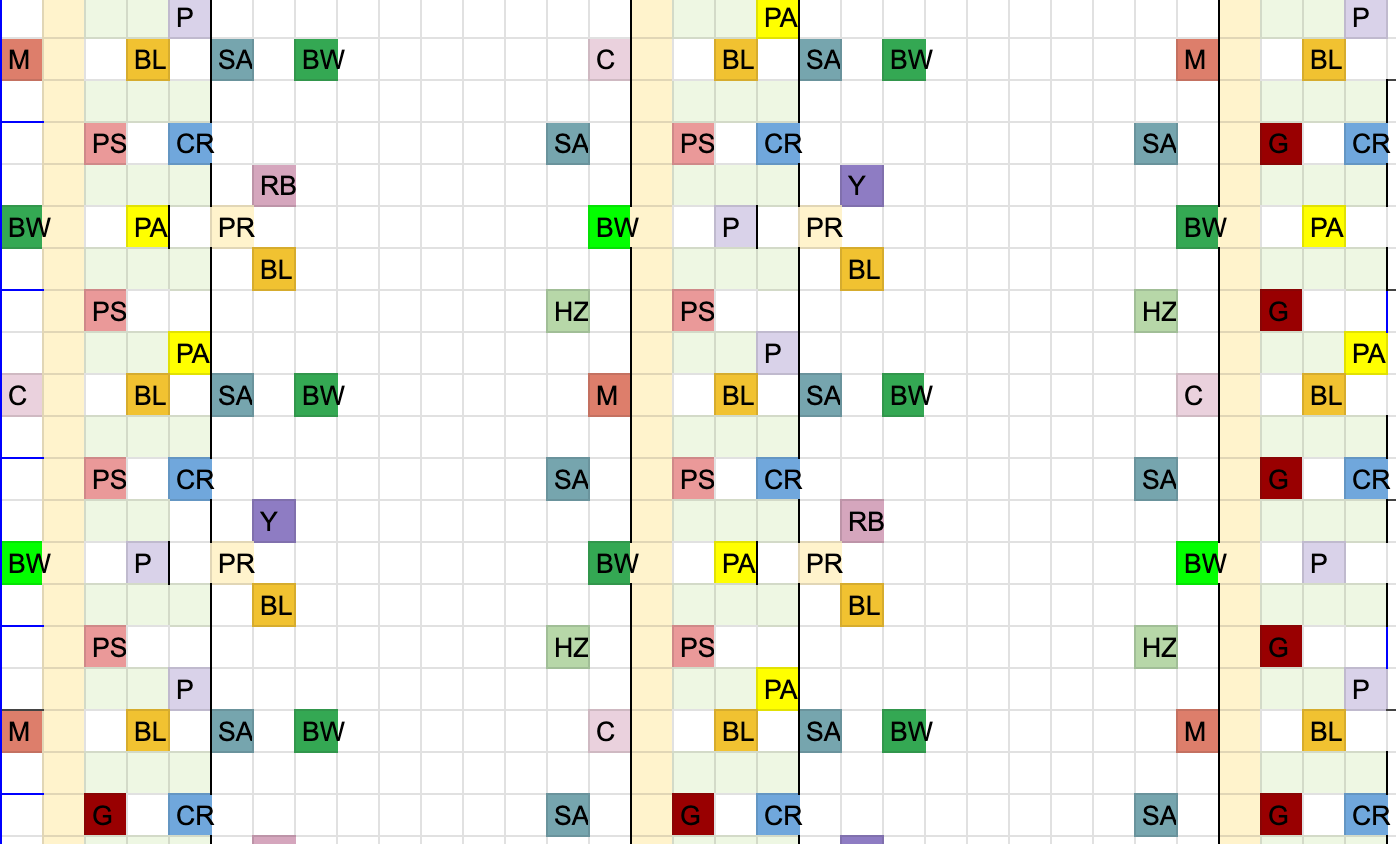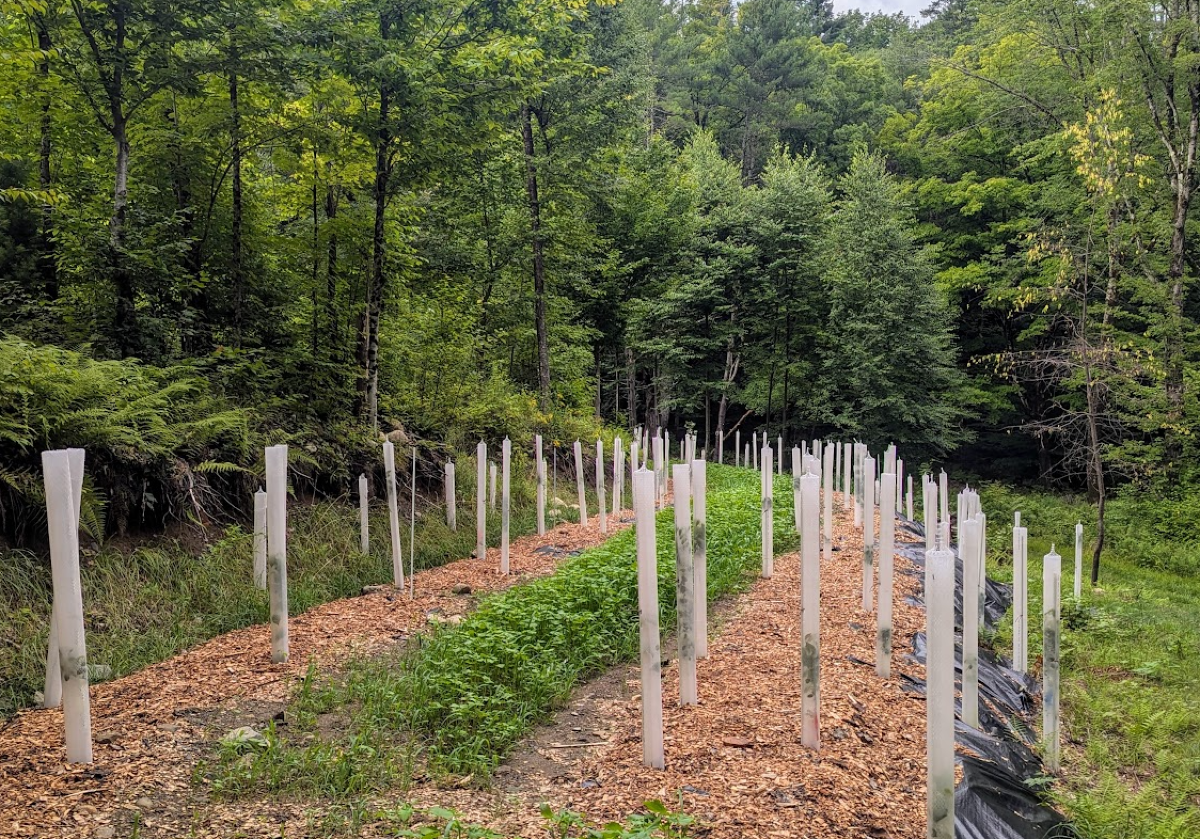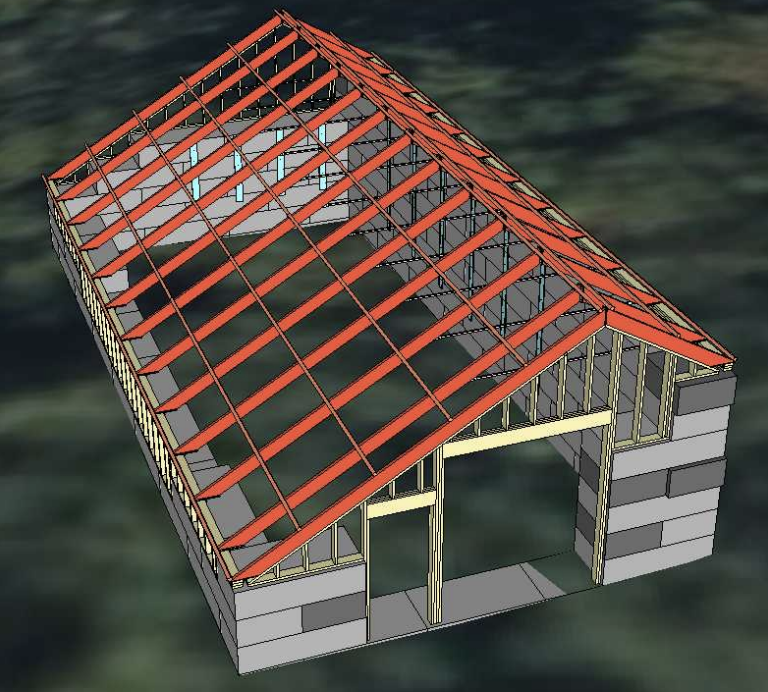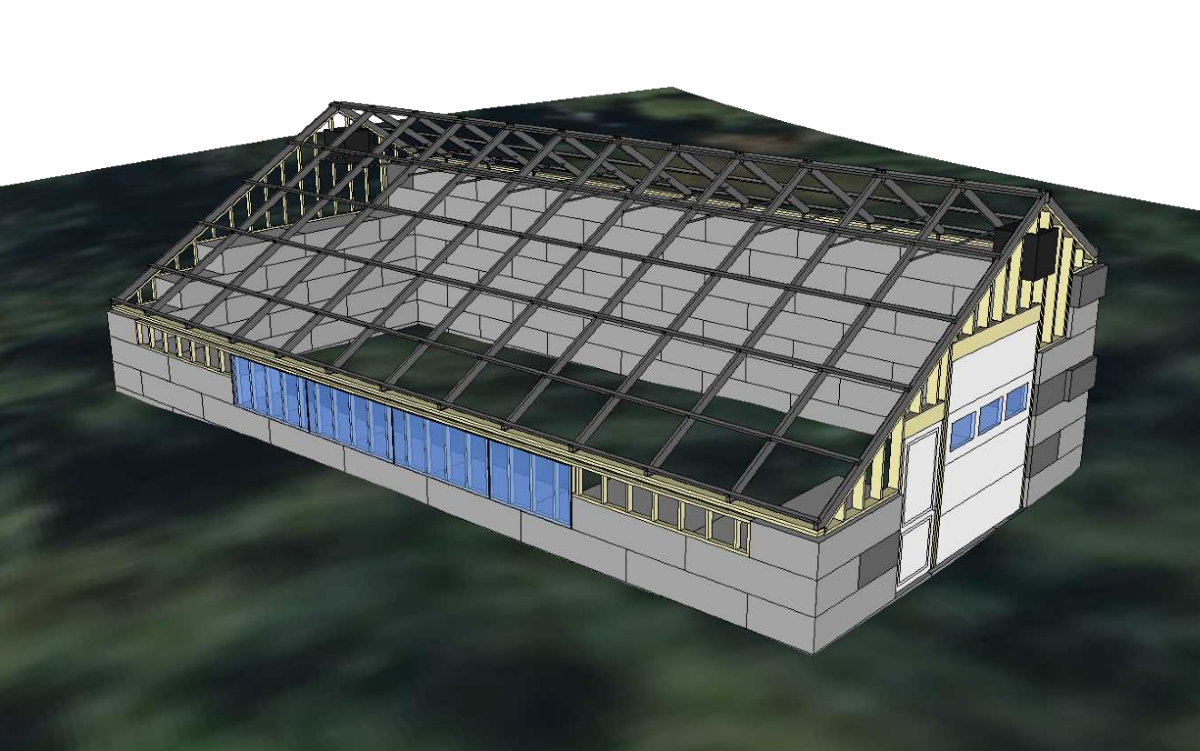Vermont Research Farm

This page describes our open source regenerative agriculture project design to test climate-resilient farming techniques that restore ecosystems while producing food sustainably.
In 2015 the first Good Ancestor Organic Farm was a research project sponsored at UNL’s College of Agricultural Sciences and Natural Resources via a hoop house grant for a student farm. The campus is home to one of the foremost organic agriculture programs and textbooks, and yet had no agriculture space dedicated to organic farming for student research.
Today our Vermont Research Farm is at the heart of this work, serving as a living laboratory where we test and refine land stewardship, food forest development, soil regeneration, and energy-efficient growing systems.
What We’ve Built So Far
Since 2023 we have significantly expanded our work on the farm, focusing on:
- Planting over 1,000+ trees and shrubs to establish a thriving food forest
- Developing polyculture trials that integrate multiple plant species for soil health and biodiversity
- Constructing an automated in-earth geothermal greenhouse, designed to operate year-round with minimal external energy
See: Geothermal Green House Prototype - Advancing sustainable land management practices, including terracing, natural fertilizers, and water conservation methods
This research is laying the foundation for scalable, replicable models that farmers and land stewards can use to build their own regenerative systems.

Expanding the Vermont Food Forest
A core component of the Vermont project is the food forest, which is designed to maximize long-term productivity while enhancing ecological resilience. This year, we have:
- Expanded our tree-planting initiative, adding walnut, chestnut, hazelnut, and fruit trees, along with nitrogen-fixing companion plants
- Launched intercropping trials to study how diverse plant species interact and improve soil conditions
- Implemented a terrace-based agroforestry system, which prevents erosion and enhances water retention
- Developed strategies for long-term carbon sequestration, ensuring that the farm contributes to climate stability
Each of these steps is contributing to a diversified, perennial-based farming system that provides food, sequesters carbon, and increases biodiversity.


Innovating with Geothermal Greenhouses
A major milestone for the Vermont project has been the construction of our automated in-earth geothermal greenhouse, which has now finished its first phase of construction. See: Geothermal Green House Prototype
Unlike traditional greenhouses, this system:
- Uses underground geothermal energy to regulate temperature, reducing reliance on external heating and cooling
- Incorporates passive ventilation and thermal mass storage for energy efficiency
- Is designed to run on off-grid renewable power sources, including solar and micro-hydro energy
- Provides a controlled growing environment that can sustain crops year-round, even in cold climates
The goal is to create a low-maintenance, energy-efficient model that can be replicated in a variety of climates, supporting both small-scale farmers and global food security efforts. Within it we plan to conduct various trials including AI-controlled hydroponics and multi-cropping systems.


Advancing Regenerative Soil Management
Healthy soil is the foundation of resilient agriculture. Our Vermont trials are testing a range of regenerative soil-building techniques, including:
- Cover cropping and green manure applications to restore depleted soils
- Testing natural nitrogen-fixing plants as alternatives to synthetic fertilizers
- Compost and biochar integration to enhance soil microbiome diversity
- Minimal tillage techniques to preserve soil structure and reduce erosion
These approaches are already showing promising results in improving soil fertility, water retention, and overall plant health.
What’s Next: 2025 and Beyond
As we move into the next phase of the Vermont project, our focus will be on:
- Expanding the food forest with additional tree species and long-term perennial crops
- Refining and scaling the geothermal greenhouse model, testing automation and expanding its capabilities
- Developing open-source farming tools and knowledge-sharing resources to make our research widely accessible
- Exploring new partnerships and funding opportunities to accelerate regenerative agriculture adoption
Building a Model for the Future
The Vermont Research Farm is more than just an agricultural site—it’s a proof of concept for regenerative, climate-adaptive farming. By combining food forests, geothermal greenhouse technology, and advanced soil management, we are working to develop a scalable, sustainable model that can be applied globally.
If we can demonstrate that agriculture can regenerate ecosystems while producing food efficiently, we can create a future where farming is a solution to, rather than a cause of, climate and environmental challenges.